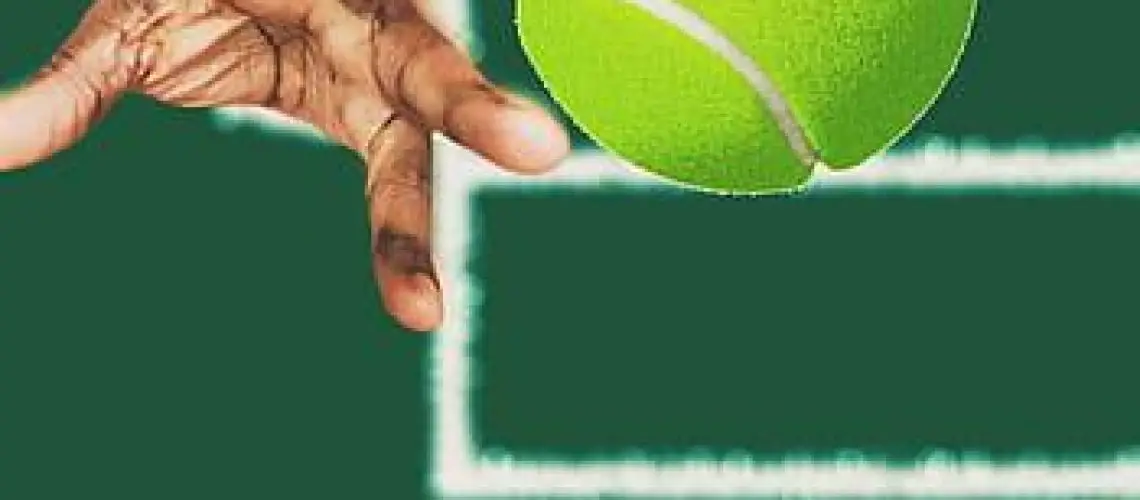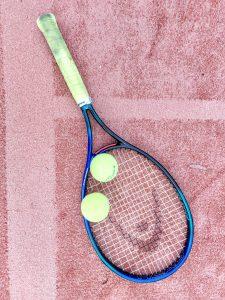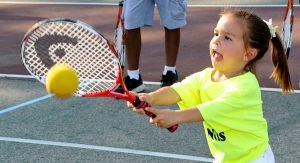We may earn money or products from the companies mentioned in this post.
Introduction

Tennis, a dynamic and exhilarating sport, has captivated the hearts of millions around the world With its origins dating back to the 19th century, tennis has evolved into a beloved game played by individuals of all ages and skill levels From recreational players looking for a fun way to stay active, to competitive athletes striving for greatness on the professional circuit, tennis offers something for everyone
A General Overview of Tennis as a Sport
With its roots in medieval handball games, tennis has come a long way The modern form of the sport can be traced back to 19th-century England when it was played primarily by members of elite social clubs Over time, tennis gained popularity and became more accessible to people from all walks of life
Today, tennis is recognized as one of the most popular sports worldwide It is played on various surfaces such as grass, clay, and hard courts, each providing unique challenges and strategies The sport combines physical agility with mental prowess, requiring players to exhibit speed, power, precision shots, and strategic thinking
Popularity Among Various Age Groups and Skill Levels
Tennis appeals to individuals across generations due to its versatility and inclusive nature Children as young as four years old can start learning basic skills through modified equipment and simplified rules Many schools offer tennis programs that introduce youngsters to the sport at an early age
For adults seeking a new hobby or fitness activity, tennis provides an excellent option Whether playing socially with friends or joining local leagues and tournaments, adults can enjoy the physical benefits while fostering camaraderie among fellow players
Furthermore, tennis remains captivating for older adults who wish to maintain an active lifestyle or engage in competitive play within their age brackets The sport’s adaptability allows players to adjust their game as they age, ensuring that tennis can be enjoyed well into the later years of life
Importance of Understanding the Time Commitment to Learn Tennis

When embarking on a journey to learn tennis, it is vital to recognize the time commitment required Tennis, like any skill-based endeavor, demands patience and dedication in order to make progress Setting realistic expectations from the beginning can help individuals stay motivated and avoid becoming discouraged when faced with challenges
Setting Realistic Expectations for Progress
Learning tennis involves developing a range of skills such as footwork, hand-eye coordination, technique, and strategy While some people may quickly pick up the basics and see rapid improvement, others may require more time and practice to refine their abilities
It is important not to compare oneself to others or expect immediate mastery of the sport Each individual progresses at their own pace, and focusing on personal growth rather than external benchmarks can lead to a more fulfilling tennis journey
In conclusion, tennis offers an exciting and engaging experience for individuals of all ages and skill levels Understanding the history and popularity of the sport can provide context and appreciation for its evolution over time Additionally, recognizing the time commitment required when learning tennis allows individuals to set realistic expectations for their progress and enjoy the process of improving their skills
Factors influencing the learning process

When it comes to learning a new skill, such as playing sports, several factors come into play These factors can greatly influence an individual’s ability to pick up and excel in their chosen activity Let’s take a closer look at some of these key factors:
Individual learning capacity and experience in sports
One crucial factor that affects the learning process is an individual’s own learning capacity and previous experience in sports Those who have a background in racket sports or similar athletic activities may find it easier to adapt to new movements and techniques This familiarity with physical coordination, balance, and endurance gives them a head start when it comes to mastering the game
Quality and frequency of training sessions
The quality and frequency of training sessions also play a significant role in how quickly someone learns a sport There are different approaches one can take – hiring a professional coach or joining group lessons, or opting for self-teaching through online resources or books While having expert guidance can provide valuable insights and personalized instruction, self-teaching allows for flexibility and independence Whichever path is chosen, consistency in practice schedule and intensity of workouts during each session is vital for progress
Age and physical fitness level
An individual’s age and physical fitness level can have both advantages and challenges when it comes to learning sports Starting young has its benefits; children tend to have more flexibility, quick reflexes, and absorb information at a rapid pace However, adult beginners face their own set of challenges due to decreased flexibility and potentially limited time commitments outside work or family life
Another important aspect is overall fitness level – being physically fit can positively impact one’s learning curve as it contributes to greater stamina, strength, and agility on the field
By considering these factors and tailoring the learning process accordingly, individuals can optimize their chances of success in sports It’s important to remember that while some factors may be beyond our control, dedication and perseverance are crucial elements that can push us towards achieving our goals
Guidelines for measuring progress and setting goals

When it comes to improving your tennis skills, it’s important to have a roadmap that outlines your progress and sets achievable goals By establishing short-term milestones, you can track your advancement and stay motivated along the way
Establishing short-term milestones
The first step in measuring your progress is mastering the basic skills of tennis This includes perfecting your grip, stance, forehand, backhand, serve, and volley Each of these elements plays a crucial role in your overall performance on the court
In addition to mastering the basics, another key aspect of setting short-term milestones is improving consistency This means reducing unforced errors and increasing your ability to execute shots with precision Consistency is what separates good players from great ones
Long-term objectives
While short-term milestones help you make immediate progress, long-term objectives are essential for continuous growth in your tennis journey Advanced techniques like topspin, slice, drop shot, and lob can take your game to a whole new level by adding variety and unpredictability to your shots
Furthermore, developing strategies for both singles and doubles play is crucial for advancing as a well-rounded player Understanding positioning on the court, shot selection based on opponents’ weaknesses or strengths, and effective communication with partners are all factors that contribute to success in competitive matches
Participation in local tournaments or leagues
To truly gauge your progress against other players at a similar skill level and gain valuable match experience, participating in local tournaments or leagues is highly recommended These events provide an opportunity to put your skills into practice under pressure while also allowing you to assess how far you’ve come since starting out
By actively engaging in competitive play, you’ll be able to analyze your strengths and weaknesses, identify areas for improvement, and set new goals based on your performance against other players This firsthand experience is invaluable for your overall growth as a tennis player
Tips for Accelerating the Learning Process

When it comes to learning tennis, investing in quality equipment that matches your skill level is essential This includes selecting the right racket size, string tension, and footwear Choosing the appropriate gear not only improves your performance but also plays a crucial role in preventing injuries So, take some time to research and invest in equipment that suits you best
Integrating supplementary training methods can significantly accelerate your progress on the court Cardiovascular exercises like running or cycling help increase stamina, allowing you to last longer during intense rallies Additionally, incorporating strength training into your routine using bodyweight exercises or resistance bands can enhance power and stability, giving you more control over your shots Don’t forget about flexibility and balance routines such as yoga or Pilates as they improve movement on the court and help prevent injuries
Aside from physical training, there are plenty of additional resources available to aid in your learning journey Online tutorials, tennis instructional books, and DVDs provide valuable insights from experienced players and coaches Engaging with social media groups, forums, or joining local tennis clubs allows you to network with other learners who share similar goals and challenges Take advantage of these resources to gain diverse perspectives and learn from those who have already walked the same path
Conclusion

In conclusion, accelerating your learning process in tennis requires dedication and a multi-faceted approach Investing in quality equipment suited for your skill level ensures optimal performance while minimizing the risk of injuries Integrating supplementary training methods like cardiovascular exercises, strength training, flexibility routines will enhance your overall game on the court
Furthermore, leveraging additional resources such as online tutorials or engaging with social media groups can provide valuable insights from experienced players and create opportunities for networking with fellow learners
Remember that mastering tennis takes time, persistence, and patience Enjoy the journey of learning a new sport, celebrate small victories along the way, and continue to refine your skills With determination and the right approach, you’ll be well on your way to becoming a skilled tennis player
Useful Links

How Long Does It Take to Learn Tennis : You Must Know
How long from beginner to 3.5?
Is Tennis Hard to Learn? – Penalty File
How Many Tennis Lessons Do I Need?
How Long Does it Take to Learn Tennis Serve? – Sport Racket
How often should I take tennis lessons? – The Donut Whole
How Many Tennis Lessons Do You Need?
Learning How to Play Tennis for 30 Days – YouTube
Can You Learn Tennis At Any Age? (And What To Expect)
Learn How to Play Tennis Quickly for Beginners
What Is The Best Age To Start Tennis? (Here Are The Facts)
How to Play Tennis (with Pictures)
Tips and Gear for Tennis Beginners
Tennis for Beginners: Key tips to get you started
Can You Forget How To Play Tennis? – Things to Know
How to Play Tennis: The Beginner’s Guide to Tennis – 2023
What Age Should Kids Start Playing Tennis?
11 Reasons Why Tennis Is Hard To Learn






